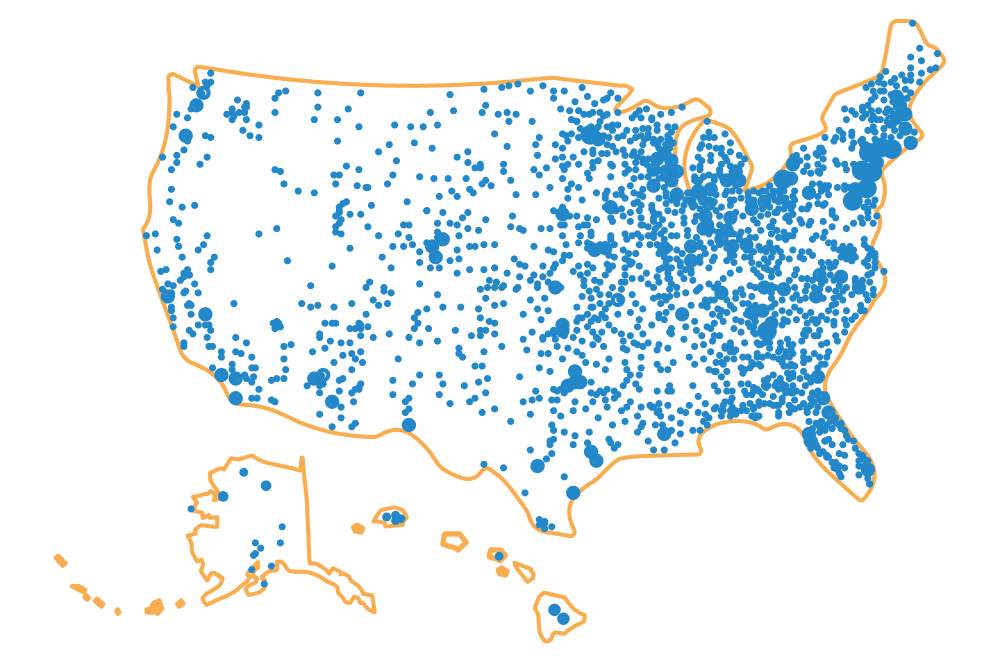Ohio 529 CollegeAdvantage is answering some frequently asked questions about 529 college savings plans to assist you in saving for your children’s future education. Here are the facts.
What if my child doesn’t go to an Ohio school?
A 529 account can be used at any higher education institution nationwide that accepts federal financial aid. That means that while you are saving with Ohio 529, your child can choose to use those funds at an eligible institution across the U.S.
If the school has a Federal School Code on the Free Application for Federal Student Aid (FAFSA), then withdrawals for the qualified higher education expenses at that school will be tax-free. And those institutions include four-year colleges and universities; two-year community colleges; trade, tech, and vocational schools; apprenticeships; and certificate programs.
What if we’re expecting financial aid?
When you fill out your 2025-2026 school year FAFSA form, your 529 account will be considered as a parental asset. When owned by a parent, the 529 plan funds are assessed at a maximum of 5.64% of its value. For lower-income families, this percentage rate could be lower. And starting in 2024, grandparent-owned 529 accounts aren’t included in financial aid calculations.
Federal financial aid is offered in the form of grants, scholarships, loans, or work study. With Pell Grants, students do not have to repay this aid. Work-study programs allow enrolled students to work part-time to earn money for college costs. Federally subsidized student loans and parental loans must be repaid after college with interest. Make sure you understand what type of aid is being offered to see whether you will have to repay it with accrued interest.
Another reason to fill out FAFSA: Other organizations—like states, universities, colleges, and private organizations—use it to determine what institutional scholarships or loans to offer to students interested in attending their school.
What if my child gets a scholarship?
Your Ohio 529 account is still a valuable component of your college-saving strategy even if your child does earn a scholarship.
Very few scholarships cover 100% of the costs. A 529 plan is perfect to pay for the other qualified expenses such as: room and board during any academic period the beneficiary is enrolled at least half-time (this includes rent for off-campus residency and non-taxable groceries provided these costs are equal or less than the same room and board allowances from the accredited education institution); mandatory fees; computer equipment and related technology and services; books; supplies; and equipment required for enrollment or attendance; and certain expenses for a special-needs student.
If your child does receive a full-ride scholarship, you can hold onto your 529 funds for your child’s continuing education such as graduate, law, or medical school.
Or you can transfer the 529 plan funds to another beneficiary. The new recipient must be a family member to the original beneficiary — including siblings, stepsiblings, stepparents, cousins, grandparents, nieces and nephews — to avoid tax penalties. You could hold onto the account for your grandchildren’s future college costs since there are no time limits for using 529 plans. You can even roll over the account to yourself to fund your own continuing education!
Starting in 2024, you now have the option to rollover unused 529 funds to a Roth IRA for the same beneficiary. This rollover is tax-free and penalty-free. With the new Roth IRA rollover option, you can take your 529 savings and give your children a jump start on their retirement savings. Lastly, you always have the option of withdrawing all the funds from your 529 plan. There will be a 10 % federal tax penalty as well as taxes assessed on the earnings portion only of the withdrawal.
You also have the option of withdrawing up to the same dollar amount as the scholarship from the 529 plan. This will be considered a non-qualified withdrawal and only the earnings portion will be subject to taxation. As your account contributions are made from after-tax dollars, the contribution portion of the withdrawal will not be taxed. The earnings portion of the withdrawal will be subject to federal, state, and local income taxes. Typically, there would be an additional 10% federal tax penalty on the earnings. However, this penalty is waived if the student receives a scholarship. Consult your financial advisor or tax consultant before you make a non-qualified withdrawal.
What if my child doesn’t go to college?
You always have access to the money you have saved in a 529 plan.
First, you can hold onto to the 529 account to see if your child rethinks the decision for there are no time limits using it. Let the 529 plan sit and watch the tax-free earnings continue to grow. If not, you can transfer the funds to any member of the family of your beneficiary, including yourself, without any tax consequences.
Again, you can roll over 529 funds to a Roth IRA for the same beneficiary to start their retirement savings. This rollover is tax-free and penalty-free.
There is always the option of withdrawing all the funds from your 529 account. This will be considered a non-qualified withdrawal. If you make a non-qualified withdrawal, there will be penalties imposed with the request. Like other tax-advantage saving programs, there is a 10% federal tax penalty assessed for withdrawing money from the 529 plan for costs that aren’t considered qualified higher education expenses. Then only the earnings portion will be taxed on the federal, state, and local level. Keep in mind, your 529 contributions are made with post-tax dollars. If you are an Ohioan who has received the state tax deduction due to your contributions to Ohio’s 529 Plan, you will also be responsible for paying back any of the state benefit related to the principal portion of the withdrawal.
Before making a non-qualified withdrawal, consult your financial advisor or tax consultant.
Visit Ohio 529 online to start saving today for your child’s future education. An investment in a 529 plan is an investment in your child where every dollar saved today is a dollar that doesn’t have to be borrowed later. Learn, plan, and start with Ohio 529 today at CollegeAdvantage.








